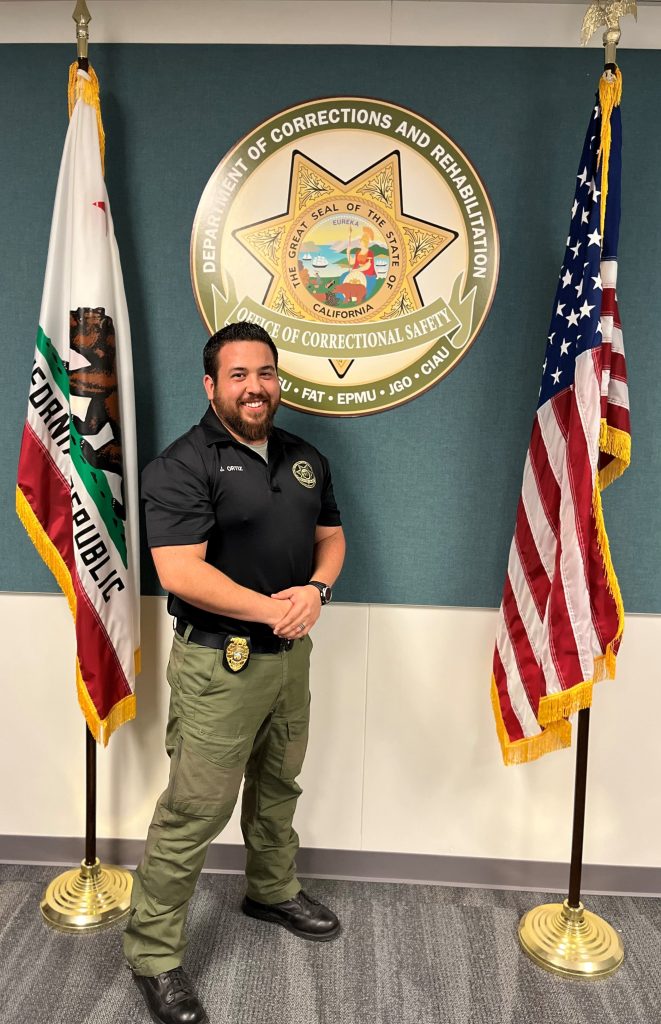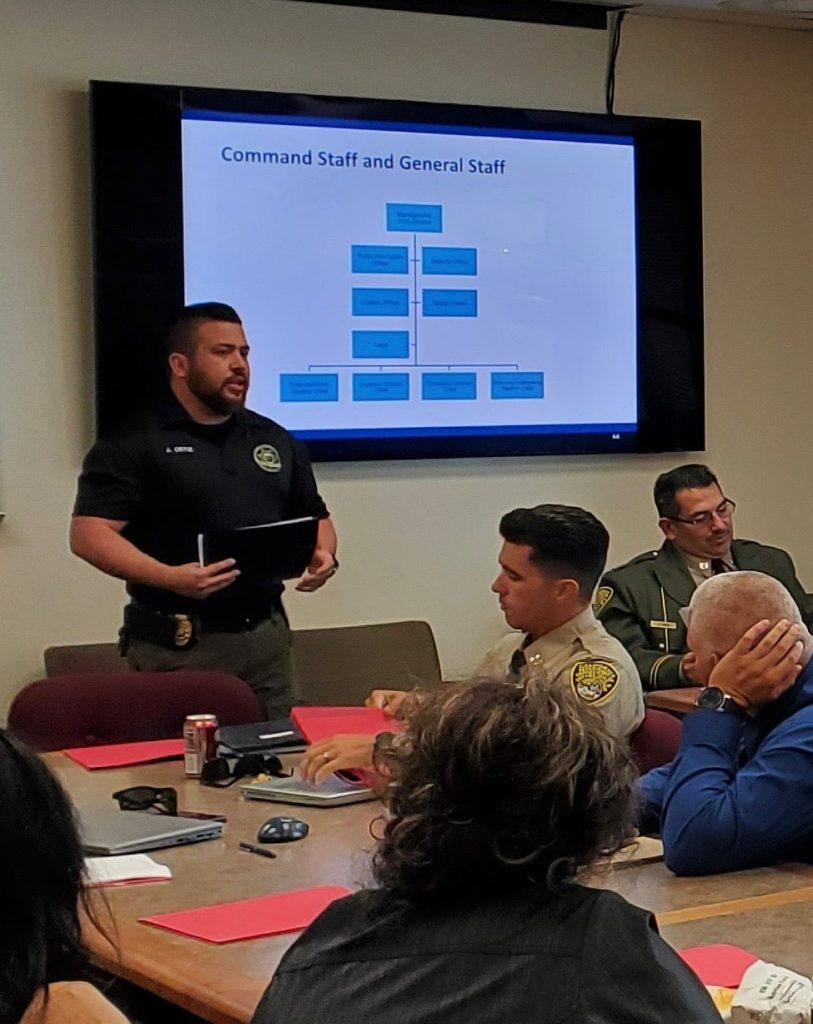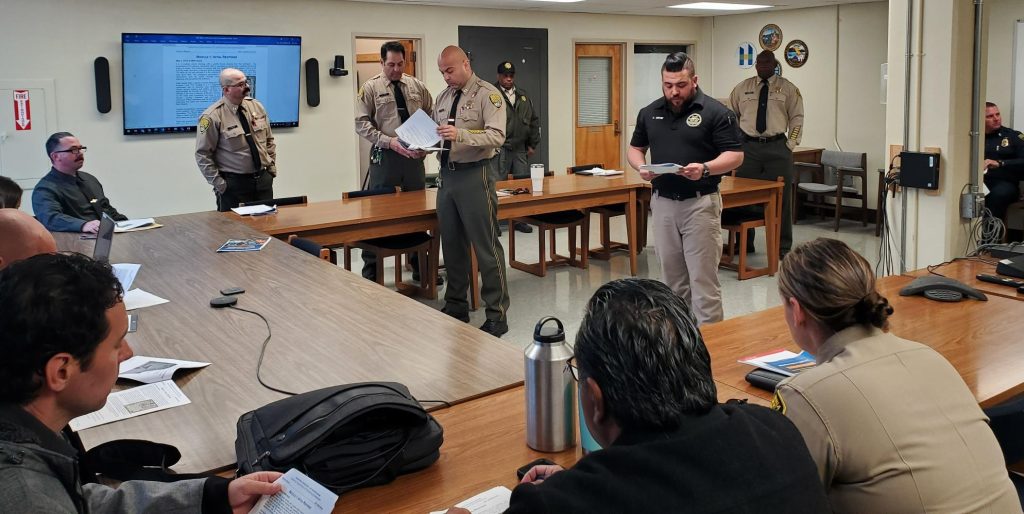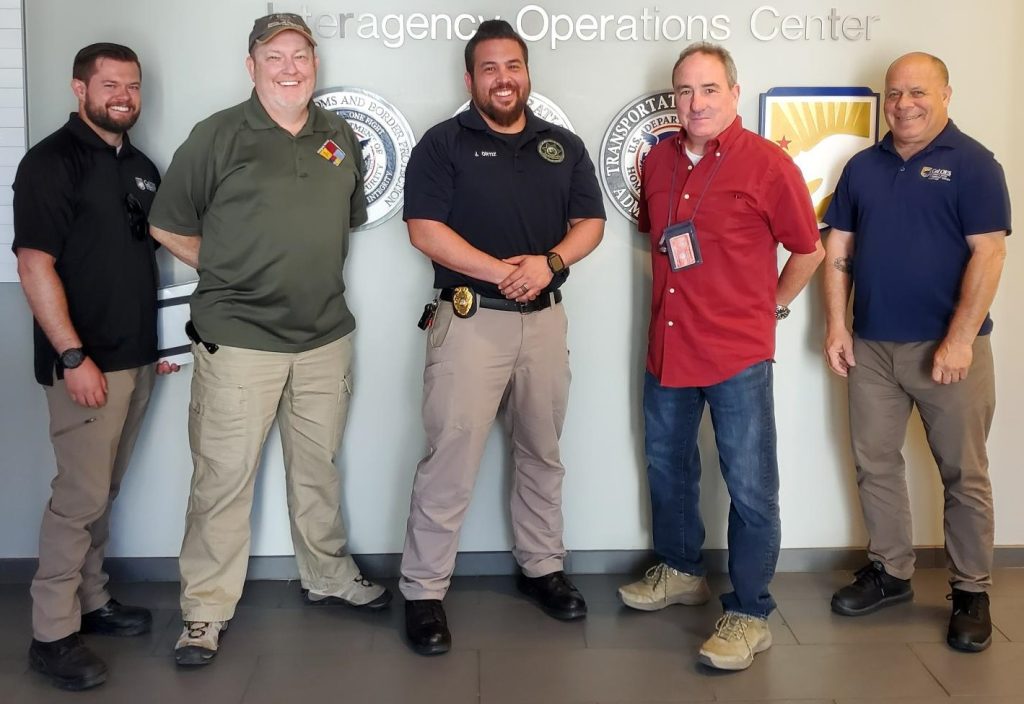As emergency situations occur, CDCR always plans to stay one step ahead. Whether that be through planning, administering information, or stocking up on gear, the department wants to ensure it’s ready. CDCR and CCHCS staff have been trained and prepared for how to handle these situations.
Jason Ortiz, Office of Correctional Safety (OCS) Senior Emergency Services Coordinator, has stayed ready throughout his career with CDCR.
In 2022, Ortiz was awarded the Bronze Star.
Inside CDCR asked Ortiz a few questions on what helps him stay prepared and how he has taken precautions over the years.
His CDCR career began during the pandemic
Ortiz is an emergency manager by trade, and Senior Emergency Services Coordinator by classification. He started with CDCR in 2020 as an Emergency Services Coordinator, during the COVID-19 pandemic. Ortiz has worked in the Department Operations Center (DOC) through disasters that impacted institutions or other agencies requiring aid assistance.
Today, he works for the Emergency Planning and Management Unit (EPMU). Ortiz is the Senior Emergency Services Coordinator in the OCS at CDCR Headquarters in Sacramento. He teaches the Incident Commander course at the Lieutenant’s Academy. He also travels around to institutions to facilitate incident command training and exercises.
His position receives and reviews the Emergency Operations Plans submitted annually by the institutions and maintaining the CDCR All-Hazards Plans. He is very passionate about his work and takes pride in being an emergency manager at CDCR. Not only because of the work, but also because of the caliber of people he gets to work with.
What does your typical day entail?
As an emergency manager, my workday is typically very busy. I start my day by updating the DOC display wall with the current operations briefings. This includes State and Federal agencies for situational awareness in our state and around the country. We have a few other resources that show us the status of incidents and seismic activity in real time.
I then work on a few projects that support our emergency and disaster readiness goals. For instance, I will create training products for disaster exercises to be conducted at the institutions’ Incident Command Posts. This process includes a localized threat assessment for an institution based on geographical analysis for the likelihood of natural hazards. This creates a scenario that impacts the institution where local resources are impacted. The exercise scenarios are designed to cultivate adult learning from the subject matter experts at the institutions.
Additionally, I facilitate meetings with outside agencies for collaborative disaster planning. I work on cost recovery projects with our incredible accounting branch, and field questions from the throughout CDCR. Questions vary from emergency operations, planning documents, incident command training materials, and anything else they might need.
Due to California’s diverse risk landscape, a typical day can change quickly during disasters. When activated, I work as a DOC liaison and agency representative at the Cal OES State Operations Center (SOC). My responsibilities re-prioritize to getting information regarding impacts and unmet needs. We can then identify resources to send out to impacted institutions or other agencies requesting resources from us.
What types of emergencies does CDCR prepare for?
Representative types of all six of the world’s major biomes can be found in California. CDCR has institutions in all of them. Due to the varied natural and human-caused hazards we experience in this state, CDCR must prepare for all-hazards.
This preparedness is accomplished through communication, collaboration, and coordination from all parts of the department. We work together for effective response and recovery operations. Hurricanes, wildfires, floods, and earthquakes are just a small sampling of the natural hazards any California community can face.
CDCR institutions are a community of their own, and for some locations, are part of their surrounding community. Emergency Management relies heavily on bolstering partnerships within our communities where we will be impacted together. Learning to work together before a disaster prepares us better for the real event. CDCR takes an all-hazards, whole-community approach through planning, training, exercises, and staying informed to be prepared for the next disaster.
How can someone learn more about emergency preparedness?
Emergency preparedness is important for everyone regardless of where you live or what your lifestyle is like. There are many ways to learn more about emergency preparedness. The best way for you will depend on your individual learning style and preferences.
The first step is to make yourself aware of the hazards in your area. You can use MyHazards.CalOES.ca.gov to find your address and get a comprehensive risk summary for that location.
Whether at work, at home, or going on a trip, look at the hazards in your area. Identify how you would respond to those hazards if they were to impact you. There are free resources online for yourself and family on Ready.gov from the US Department of Homeland Security.
Using these resources, I found out that I live in an area that may require an evacuation. I used Ready.gov for ideas on preparing a “go bag” for myself and my family (including our dog).
In closing, I am fortunate to have achieved my goal of becoming an emergency manager and enjoy working for CDCR. I can apply my skills, knowledge, and passion to contribute to the safety and security to the communities we serve.
Fun facts about Ortiz
Ortiz is a first generation American, with lineage from Spain. He is a culinary school graduate and worked in professional kitchens in Las Vegas in his early working life.
Due to this training and experience, he is the designated chef for every family event and family holiday. He says he is willing to turn over duties if defeated by family in an Iron Chef style showdown. So far, there have been no challengers.
Story by Quinn Sheppard, AGPA
OPEC




See more stories highlighting CDCR/CCHCS staff.
Follow CDCR on YouTube, Facebook, X (formerly Twitter). Listen to the CDCR Unlocked podcast.